Review and images by Lanthanotus; edited by bmathison1972
Glaring sun scorches the land as a venomous death silently slides towards its den beneath the sparse shade of the burned grass. Suddenly night falls and accompanied by a hot but soft wind, eight fiercely piercing blades start to cut all life from its automatically wildly curling body. Resistance is futile, but instinct drives a gaping mouth armed with a dozen venomous darts towards the plated grip.

Bird figures are often not the first choice of the target group “children” when it comes to choose a new toy. So it is no wonder that, despite their overwhelming number of species within the tetrapod animals, only comparably few bird species ever found their way into the toy world. Raptorial birds (including vultures) gain more attention than others, and here we are….

The wedge-tailed eagle (Aquila audax) is one of the largest raptors and the biggest bird of prey in Australia. Its wings may span more than 2.8 metres and females may weigh up to almost 6 kg. Its habitat ranges from the most remote deserts to the tropical rain forests. While it is capable of preying on large animals as wombats, its usual diets consists of much smaller prey as small wallabies and a number of introduced species as hares. Reptiles are much less often taken than mammals or birds. Despite being dangerously venomous (for humans) the brown snake is listed as proven prey.
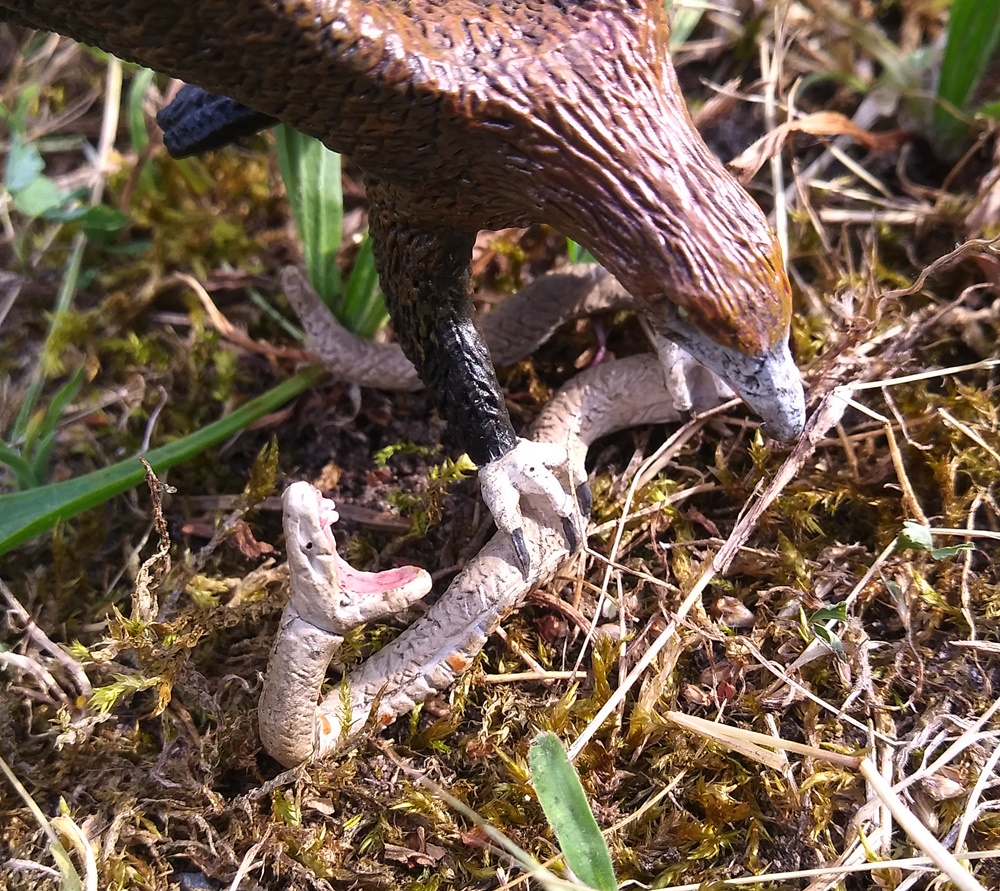
Southlands Replicas provided us with an awe-inspiring model of these two foes. While the eagle is clearly identified, the snake is not. It is called “brown snake”, but behind this name, several species, or even genus hide. So the curling reptile may either be a Pseudonaja sp. (true brown snakes) or a Pseudechis australis (king brown snake or mulga snake). It does not really matter though, as the detailing and paint scheme may fit to either of these highly variable species. The exposed fangs of the snake model are quite exaggerated, as in elapid snakes, these fangs are comparably short and barely visible even in the open mouth if the lip scales are not moved back by biting on something.
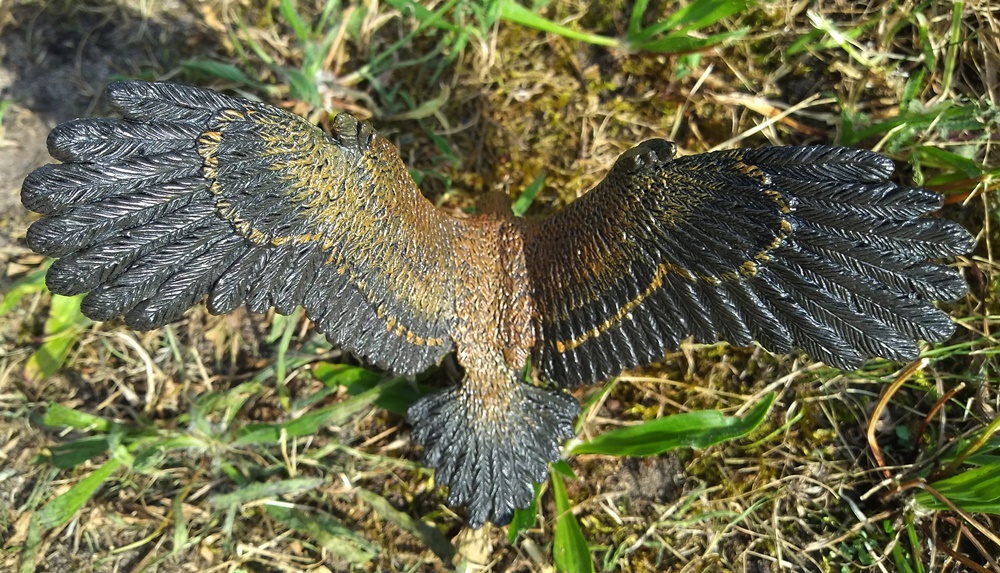
The model stands 9.5 cm tall and the span in between the wing tips is at 11.5 cm. The model is finely detailed and exquisitely painted, unfortunately Southlands missed to sculpt the wing feathers correctly. This is especially visible in the primaries (fingertips), the feathers should be asymmetrical to provide uplift, but they are symmetrical and also comparably thick as are the whole wings. This leaves the model with an imbalance. At least in my model, the slim snake which serves as a base, can not support the eagle’s heavy weight indefinitely and so the model tilts and falls back.
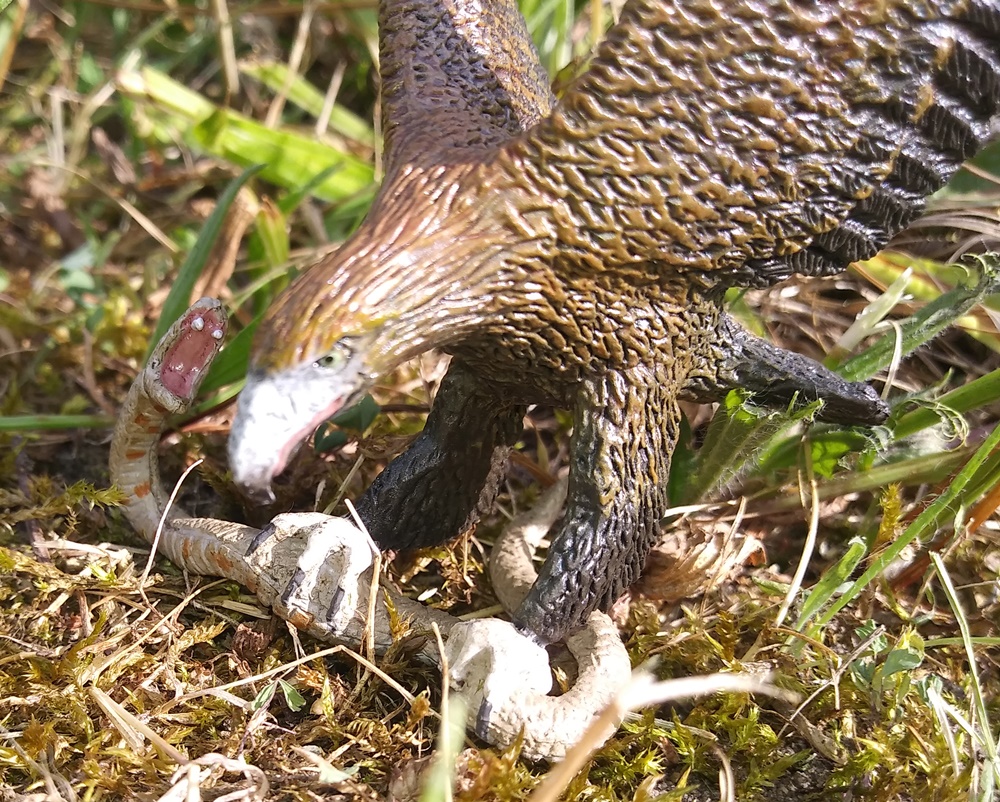
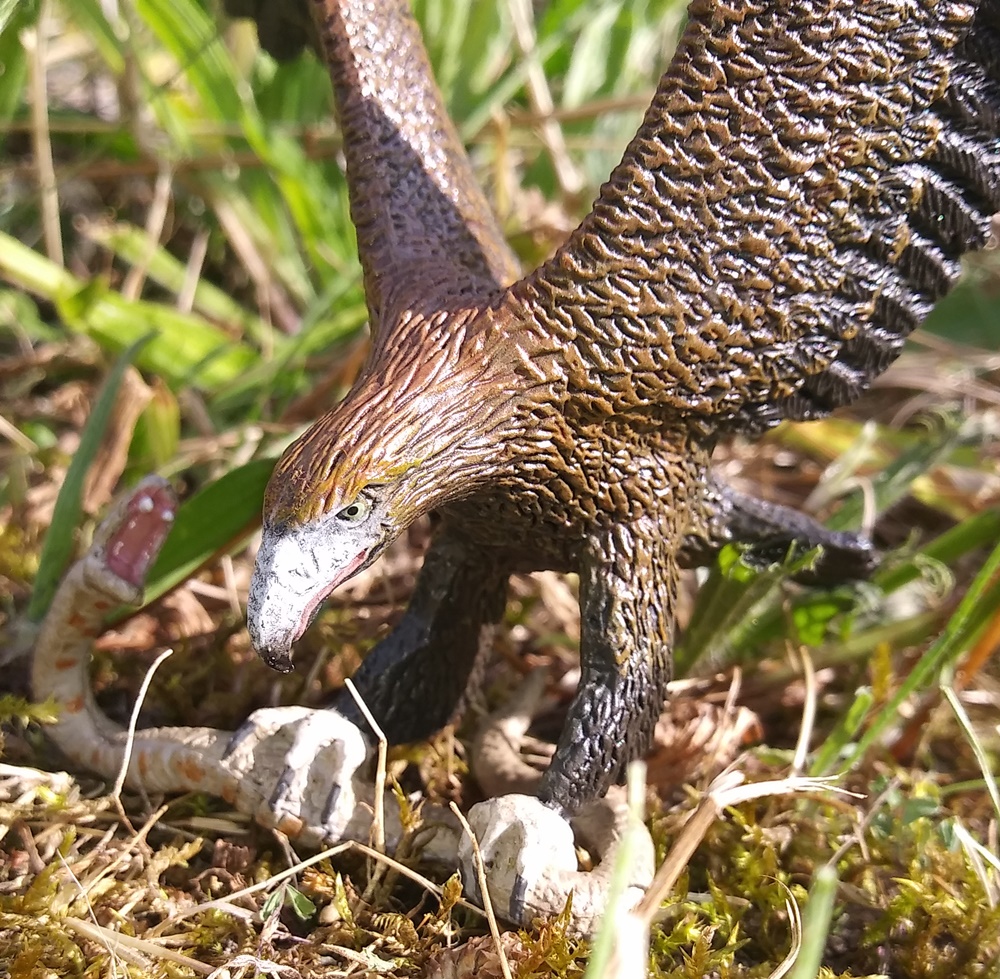
Other than that, this model of the Wedge-tailed Eagle is with no doubt the best available at the moment and also the most impressive.
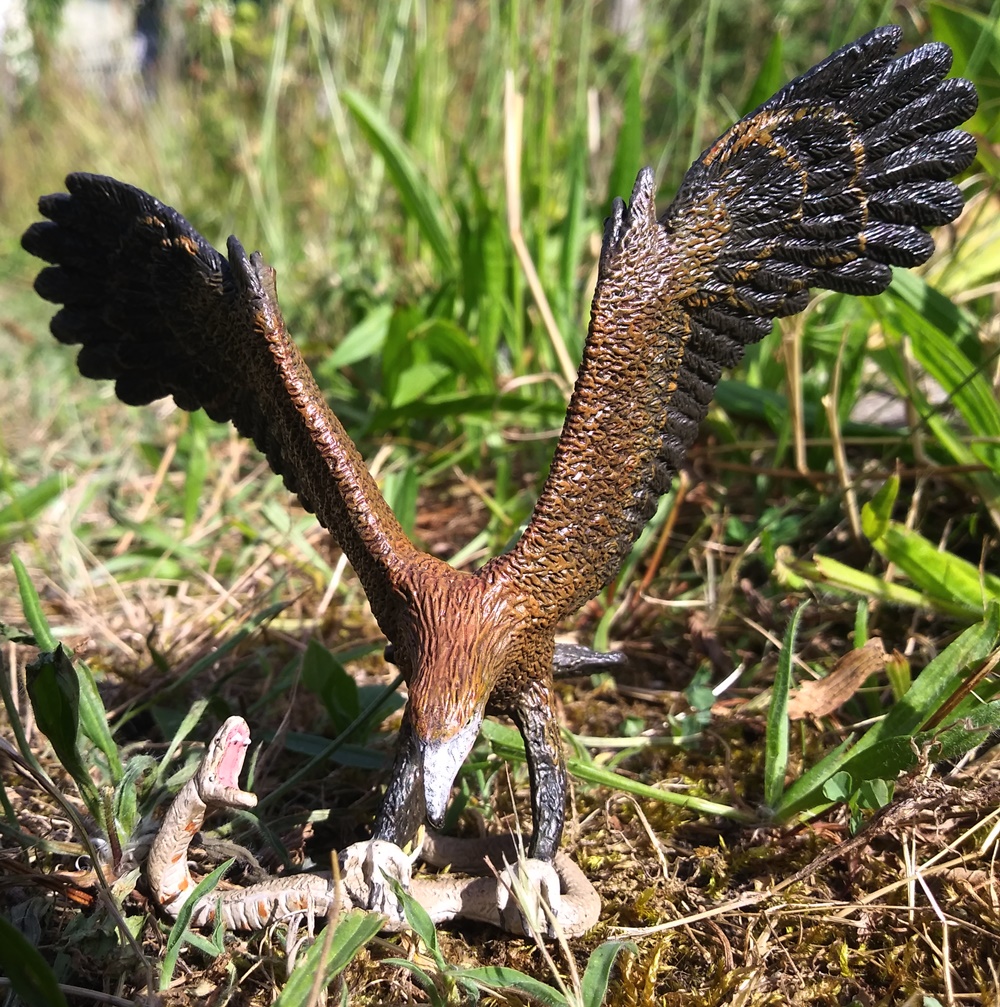
Disclaimer: links to Ebay and Amazon on the AnimalToyBlog are affiliate links, so we make a small commission if you use them. Thanks for supporting us!




This is a magnificent figure and presentation. While normally I totally go for displays like this, I went the conservative route and bought the 2019 wedge-tailed eagle by Science & Nature
They don’t make enough figures of predators gripping their struggling prey.